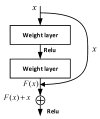Automatic Detection of Arrhythmia Based on Multi-Resolution Representation of ECG Signal
- PMID: 32178296
- PMCID: PMC7175329
- DOI: 10.3390/s20061579
Automatic Detection of Arrhythmia Based on Multi-Resolution Representation of ECG Signal
Abstract
Automatic detection of arrhythmia is of great significance for early prevention and diagnosis of cardiovascular disease. Traditional feature engineering methods based on expert knowledge lack multidimensional and multi-view information abstraction and data representation ability, so the traditional research on pattern recognition of arrhythmia detection cannot achieve satisfactory results. Recently, with the increase of deep learning technology, automatic feature extraction of ECG data based on deep neural networks has been widely discussed. In order to utilize the complementary strength between different schemes, in this paper, we propose an arrhythmia detection method based on the multi-resolution representation (MRR) of ECG signals. This method utilizes four different up to date deep neural networks as four channel models for ECG vector representations learning. The deep learning based representations, together with hand-crafted features of ECG, forms the MRR, which is the input of the downstream classification strategy. The experimental results of big ECG dataset multi-label classification confirm that the F1 score of the proposed method is 0.9238, which is 1.31%, 0.62%, 1.18% and 0.6% higher than that of each channel model. From the perspective of architecture, this proposed method is highly scalable and can be employed as an example for arrhythmia recognition.
Keywords: ECG; arrhythmia detection; deep learning; multi-resolution representation.
Conflict of interest statement
The authors declare no conflict of interest.
Figures




Similar articles
-
Detection of arrhythmia in 12-lead varied-length ECG using multi-branch signal fusion network.Physiol Meas. 2022 Oct 31;43(10). doi: 10.1088/1361-6579/ac7938. Physiol Meas. 2022. PMID: 35705072
-
Arrhythmia detection using deep convolutional neural network with long duration ECG signals.Comput Biol Med. 2018 Nov 1;102:411-420. doi: 10.1016/j.compbiomed.2018.09.009. Epub 2018 Sep 15. Comput Biol Med. 2018. PMID: 30245122
-
A multi-scale convolutional LSTM-dense network for robust cardiac arrhythmia classification from ECG signals.Comput Biol Med. 2025 Jun;191:110121. doi: 10.1016/j.compbiomed.2025.110121. Epub 2025 Apr 14. Comput Biol Med. 2025. PMID: 40233677
-
Cardiac arrhythmia detection using deep learning: A review.J Electrocardiol. 2019 Nov-Dec;57S:S70-S74. doi: 10.1016/j.jelectrocard.2019.08.004. Epub 2019 Aug 8. J Electrocardiol. 2019. PMID: 31416598 Review.
-
Application of deep learning techniques for heartbeats detection using ECG signals-analysis and review.Comput Biol Med. 2020 May;120:103726. doi: 10.1016/j.compbiomed.2020.103726. Epub 2020 Apr 8. Comput Biol Med. 2020. PMID: 32421643 Review.
Cited by
-
A robust multiple heartbeats classification with weight-based loss based on convolutional neural network and bidirectional long short-term memory.Front Physiol. 2022 Dec 5;13:982537. doi: 10.3389/fphys.2022.982537. eCollection 2022. Front Physiol. 2022. PMID: 36545286 Free PMC article.
-
Gradient Boosting Machine and Efficient Combination of Features for Speech-Based Detection of COVID-19.IEEE J Biomed Health Inform. 2022 Nov;26(11):5364-5371. doi: 10.1109/JBHI.2022.3197910. Epub 2022 Nov 10. IEEE J Biomed Health Inform. 2022. PMID: 35947565 Free PMC article.
-
State-of-the-Art Deep Learning Methods on Electrocardiogram Data: Systematic Review.JMIR Med Inform. 2022 Aug 15;10(8):e38454. doi: 10.2196/38454. JMIR Med Inform. 2022. PMID: 35969441 Free PMC article. Review.
-
Design and Optimization of ECG Modeling for Generating Different Cardiac Dysrhythmias.Sensors (Basel). 2021 Feb 26;21(5):1638. doi: 10.3390/s21051638. Sensors (Basel). 2021. PMID: 33652721 Free PMC article.
-
Special Issue: ECG Monitoring System.Sensors (Basel). 2021 Jan 19;21(2):651. doi: 10.3390/s21020651. Sensors (Basel). 2021. PMID: 33477781 Free PMC article.
References
-
- Cardiovascular Diseases (CVDs) [(accessed on 13 February 2020)]; Available online: https://www.who.int/en/news-room/fact-sheets/detail/cardiovascular-disea...
-
- Schlant R.C., Adolph R.J., DiMarco J., Dreifus L.S., Dunn M.I., Fisch C., Garson A., Jr., Haywood L., Levine H.J., Murray J.A. Guidelines for electrocardiography. A report of the American College of Cardiology/American Heart Association Task Force on Assessment of Diagnostic and Therapeutic Cardiovascular Procedures (Committee on Electrocardiography) Circulation. 1992;85:1221–1228. doi: 10.1161/01.CIR.85.3.1221. - DOI - PubMed
-
- Ye C., Kumar B.V., Coimbra M.T. Heartbeat classification using morphological and dynamic features of ECG signals. IEEE Trans. Biomed. Eng. 2012;59:2930–2941. - PubMed
MeSH terms
Grants and funding
LinkOut - more resources
Full Text Sources
Other Literature Sources
Medical

